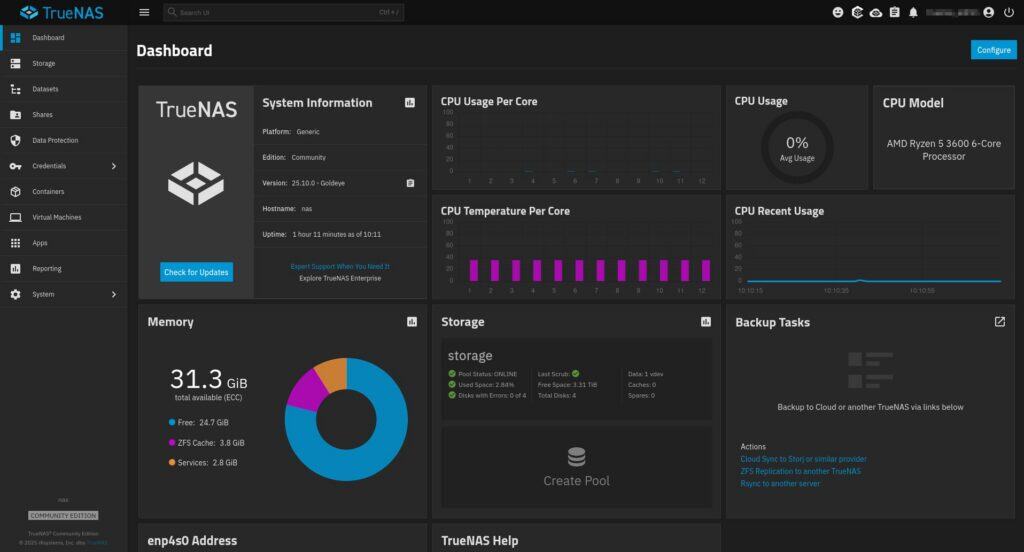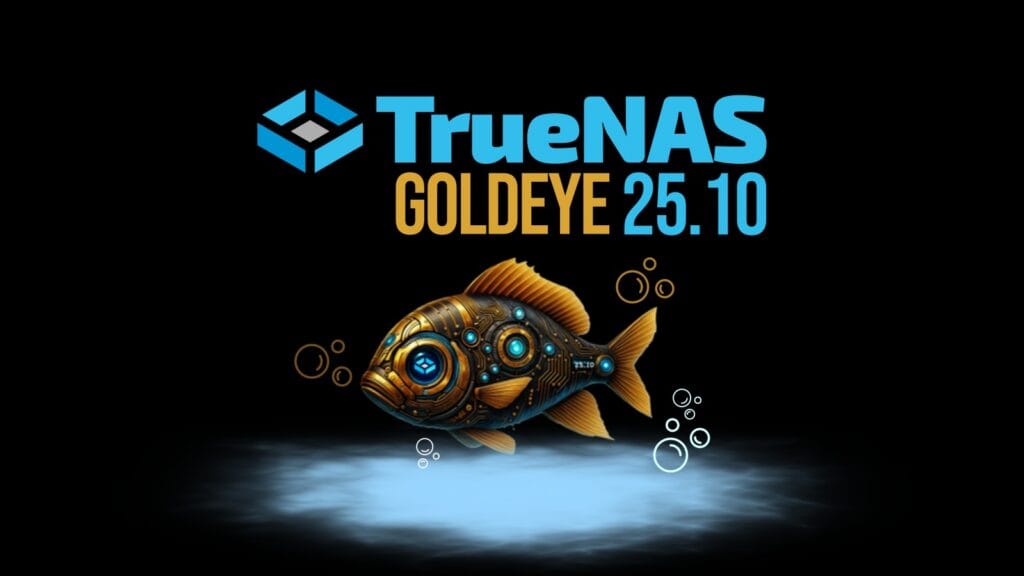The long-awaited TrueNAS 25.10, code-named “Goldeye,” a robust Linux-based enterprise-ready NAS that bets on the OpenZFS filesystem and supports containerized applications and virtualization, has officially arrived as one of the most significant updates to this open storage platform in recent years.
This release delivers major performance enhancements, improved virtualization, and a redesigned management interface, so let’s take a look at all the most important changes.
First off, this release brings a refined user experience with redesigned screens across the Updates, Users, Datasets, and Storage Dashboard interfaces.
- The revamped Users screen simplifies account management with clearer information and streamlined workflows.
- The new risk-tolerance profiles help administrators manage update notifications based on their preferred stability level.
Moreover, TrueNAS 25.10 takes storage networking to the next level with NVMe over Fabric (NVMe-oF), now offering:
- NVMe/RDMA for TrueNAS Enterprise systems.
- NVMe/TCP support for the Community Edition.
Together, these upgrades bring terabit-class networking performance and 400GbE network interface support, while RDMA capabilities reduce latency by removing TCP overhead. Plus, TrueNAS 25.10 also strengthens network configuration management, improving transitions between DHCP and static setups.

Regarding virtualization capabilities, TrueNAS 25.10 introduces Secure Boot support for virtual machines. In addition, disk import/export functionality now supports multiple formats — QCOW2, RAW, VDI, VHDX, and VMDK — making VM migration effortless between platforms.
Enterprise users gain HA support, enabling seamless VM failover between cluster nodes —a long-requested feature that elevates TrueNAS to a more robust hyperconverged environment.
Another major highlight is native support for NVIDIA’s open GPU kernel modules, enabling GPU acceleration for containerized and application workloads — including compatibility with NVIDIA’s latest Blackwell architecture. This update enables users to leverage modern GPUs for compute-intensive operations, such as AI, media processing, and scientific workloads.
ZFS also received some critical fixes and performance enhancements, with the most important ones being:
- Better handling of encrypted snapshot replication.
- Improved memory pressure management to prevent out-of-memory crashes.
- New Direct I/O support for higher performance in virtualized environments.
- Faster pool operations and more efficient I/O scaling.
On the app management side, existing applications now automatically migrate when application pools are changed, reducing downtime. Users can also configure external container registry mirrors to ensure reliability even when Docker Hub is unavailable.
The system’s disk health monitoring framework has been overhauled. Built-in SMART scheduling is replaced by a cron-based model, allowing greater flexibility and compatibility with third-party tools such as Scrutiny. Existing SMART tests migrate automatically, while TrueNAS continues to alert users of critical disk health issues.
Lastly, some older components have been deprecated:
- NVIDIA proprietary drivers are replaced by open-source drivers supporting Turing and newer GPUs.
- The AUTORID backend for Active Directory has been removed and migrated to RID.
- CA management is now external, requiring ACME or third-party certificate authorities.
- The built-in SMART UI has been removed in favor of external tools.
Administrators should review their configurations before upgrading to ensure smooth transitions.
For more information, see the official announcement or check out all the changes in the new TrueNAS 25.10 “Goldeye” here.
